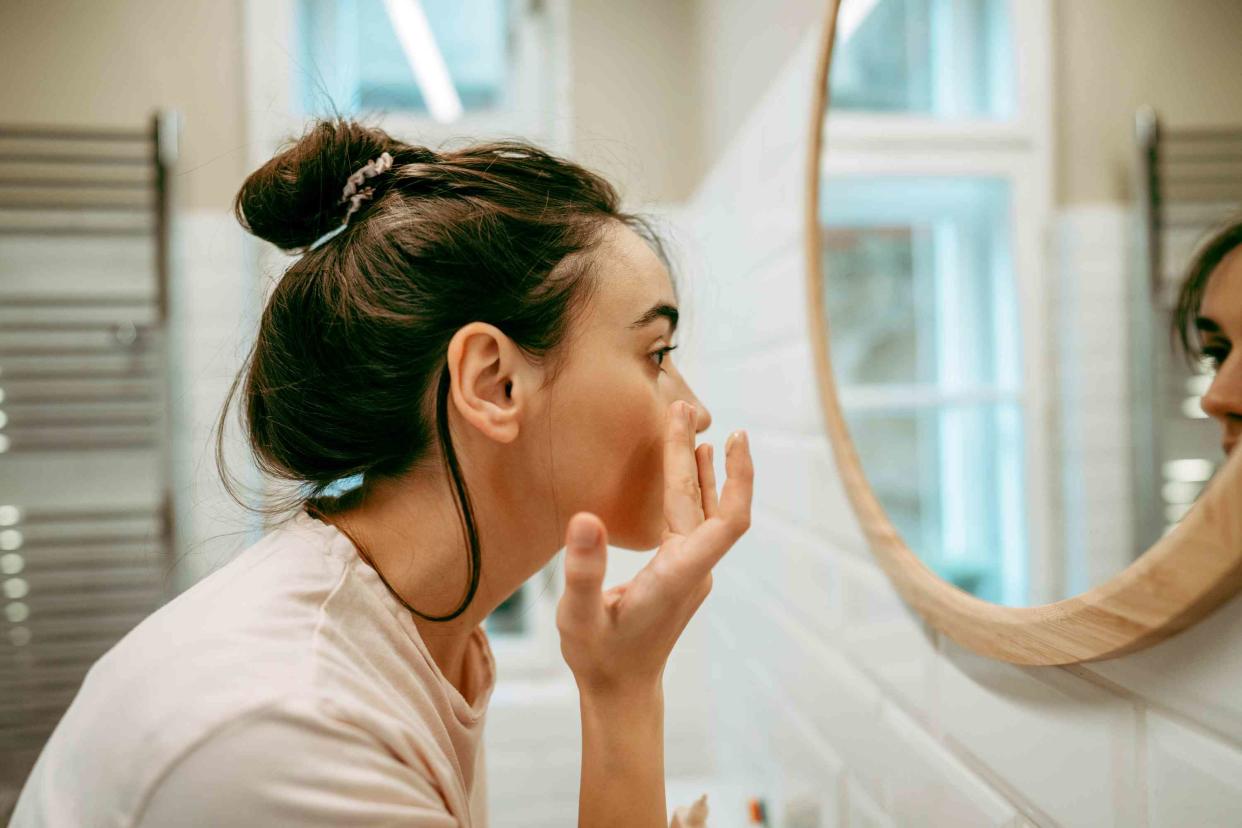Here's Why Everyone Is Talking About Skin Flooding

Getty Images
Another day, another TikTok skincare trend. The newest kid on the block that’s got everyone retooling their skin routine is all about hydration: say hello to skin flooding.
It may sound intense, but rest assured that it is not; you’re not actually flooding your skin with anything to boost moisture. Instead, it’s about strategic layering to lock water in. It’s super easy to incorporate (in fact, you may already be doing this without even knowing it), and just about anyone can hop on this trend if they’re interested in treating any dryness and dehydration in their skin.
To get the complete breakdown, we turned to the experts. Consider this the ultimate guide to skin flooding. Thank us later.
Related:The 10 Best Moisturizers for Dry Skin in 2023, Tested and Reviewed
What is skin flooding?
Skin flooding isn’t new. It’s just a rebrand of sorts. Basically, skin flooding is the method of layering skincare products to boost hydration in the skin. “Skin flooding is a great way to maximize moisture by adding specific products into your skincare routine,” says board-certified dermatologist and Mohs surgeon at the Shafer Clinic Fifth Avenue Dendy Engelman, MD. “It involves applying products containing hyaluronic acid before your moisturizer in your skincare routine (while your skin is still damp post-cleanse) to maximize moisture and fend off dry skin.”
“[It] is essentially layering your most moisturizing products from thinnest to thickest, pulling moisture into the deepest layers of your skin,” says celebrity esthetician Renee Rouleau.
What are the benefits of skin flooding?
The main benefit of skin flooding is hydration. Rouleau explains that it allows your skincare to penetrate deeper into the skin and make your regimen more effective. She says it also locks in the moisture in all layers of the skin to retain water and keep skin hydrated.
“Dehydration of the skin is the cause of many problems including irritation, redness, inflammation, and acne. So ensuring that you are hydrating your skin barrier enough will result in softer, more supple skin,” adds Dr. Engelman.
What's the best way to go about skin flooding?
Whitney Bowe, MD, board-certified dermatologist and founder of Dr. Whitney Bowe Beauty, says that skin flooding can work for anyone with dehydrated skin. Rouleau agrees and adds that it will be most beneficial to those with extra dry and sensitive skin. For anyone who is acne-prone, she says to be careful of layering on too many products as you might risk clogging pores.
“All skin types can use this method of extreme moisturizing, but it is most beneficial to those with dry skin,” says Dr. Engelman. “The main difference between skin types using this method is the frequency in which you will want to do it. If you have extremely dry skin, add it to your daily routine. If you have oily or combination skin, I would recommend doing it once or twice a week.”
All experts agree that it is easy to incorporate into your routine once you have those things in mind. Dr. Engelman says to start with a gentle cleanser (our picks are something like the Vanicream Gentle Facial Cleanser or the Vinter’s Daughter Active Renewal Cleanser) and to leave skin damp before layering anything on. Then you add your products, starting from thinnest to thickest in consistency. Rouleau recommends using water-based serums like her Skin Drink Concentrate that contain hyaluronic acid or any serum that has niacinamide. Next, you’ll want to finish off with a moisturizer packed with ingredients like ceramides such as the DWB Bowe Glowe.
Are there any downsides to skin flooding?
There aren’t many downsides to skin flooding, but Dr. Engelman says that it is best to do your research on this method and understand how to do it correctly so that it doesn’t negatively impact your skin. She advises making sure skin is still damp after you cleanse and that hyaluronic acid is applied before moisturizing to ensure that moisture is locked in. She also recommends using high-quality products and looking for gentle alternatives that will not cause a breakout if you’re especially sensitive.
Dr. Bowe adds that the more layers you put on, the high the risk of pilling — especially if you’re layering products made with silicones. You’ll also want to be careful when layering because only certain ingredients layer well with others, such as peptides and hydrating serums.
So, if you’ve been feeling dry and dehydrated, give this TikTok a try. Hydration is key to solving so many skin concerns and this is an easy way to make sure your skin doesn’t lose it.
For more InStyle news, make sure to sign up for our newsletter!
Read the original article on InStyle.

